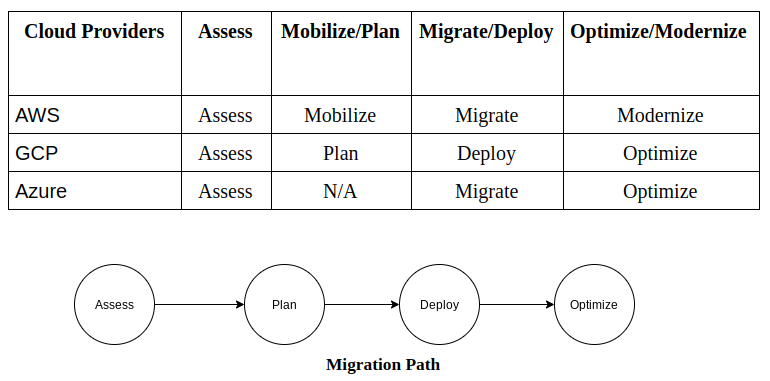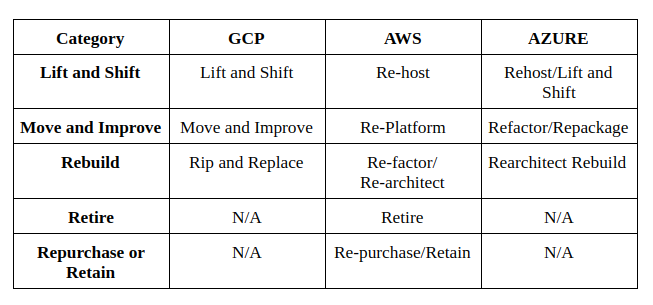Process and Strategies used for Cloud Migration
Process and Strategies used for Cloud Migration
05 March 2021
What is Cloud Migration?
The Cloud Migration is the process of moving applications and it’s infrastructure (On-premises or from another Cloud provider) to the cloud provider of your choice. It gives organizations flexibility to lower costs, become agile, increase availability, reduce latency and reap all the benefits of the Cloud.
Migration Process
Cloud migration follows a set of predefined steps, that the Organizations adopt according to the scope of their migration. AWS, GCP and Azure follow a set of best practices outlined as successful migration practices. Here are the list of phases for the migration:
Assess:
In this phase, organizations assess the application data, infrastructure and dependencies. There is a thorough assessment of the existing and new environment to establish dependencies, ownership and performance expectations.
Mobilize/Plan:
In this phase, it simply involves a lot of planning of the workloads and migration process. It includes security and identity management, understanding the organization structure, networking, sorting apps, and developing a workable migration strategy.
Migrate/Deploy:
In this phase, you design, implement and execute a deployment process to move workloads to the new Cloud provider. Depending upon the migration strategy chosen, Organizations might also need to design/refine the Cloud infrastructure to deal with new needs.
Optimize/Modernize:
In this phase, you can take full advantage of cloud native features and improve performance, scalability, disaster recovery, and later leverage machine learning and artificial intelligence capabilities. Also this step deals with ensuring security and uses all the built in cloud features to enhance performance.
Since AWS, GCP and Azure have their own terms for this migration process.
Migration Strategy
There are different ways organizations can migrate their data, depending upon the nature of the applications, pace, security and appetite for change by the management. Here is the list of migration strategies that AWS, GCP and Azure suggest as best practices to users moving their data into the Cloud.
Lift and Shift:
The Lift and Shift process is mainly used for the applications without having any business need for change and also used for the applications which are not interacting heavily with newer systems. It has low effort and low flexibility.
Move and Improve:
The Move and Improve strategy used for the Sensitive and business critical applications. Also, it is used for applications that need modernization and also which need refactoring to adjust to the new environment. The Move and Improve migrations takes longer than lift and shift migrations, because they must be refactored in order for the app to migrate. It has medium effort and high flexibility.
Rebuild:
It is mainly used for the applications which need agility and scalability in the cloud native environment. It has high effort and high flexibility.
Retire:
It is used for the applications that are redundant in nature and are no longer needed. It has low effort.
Repurchase:
It is used for the movement from ongoing licenses to software as a service (Saas) offering and it has medium effort with low flexibility.
Retain:
The retain is used for applications that are critical for the business but need major reworking before they can be recreated and it has low effort.
We all know that AWS, GCP and Azure use their own terms for each of these migration strategies. Please find the below table which helps to understand the various terms used by the Cloud Providers.
Useful Courses
- Migrating to Google Cloud: https://www.coursera.org/learn/migrating-to-gcp
- AWS Fundamentals, Migrating to the Cloud: https://www.coursera.org/learn/aws-fundamentals-cloud-migration
- Migrating Servers to Azure: https://cloudacademy.com/course/migrating-servers-to-microsoft-azure/introduction/



